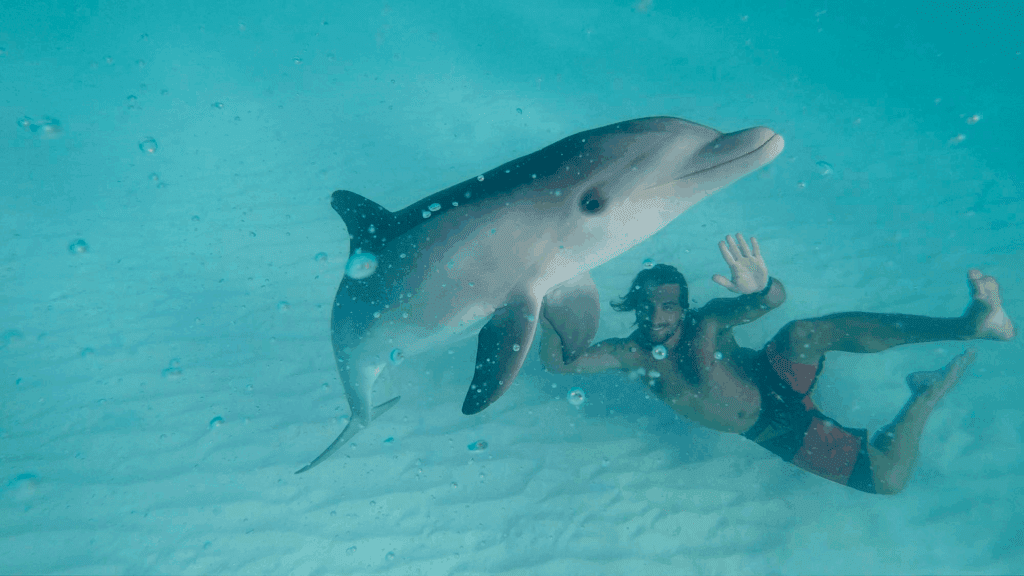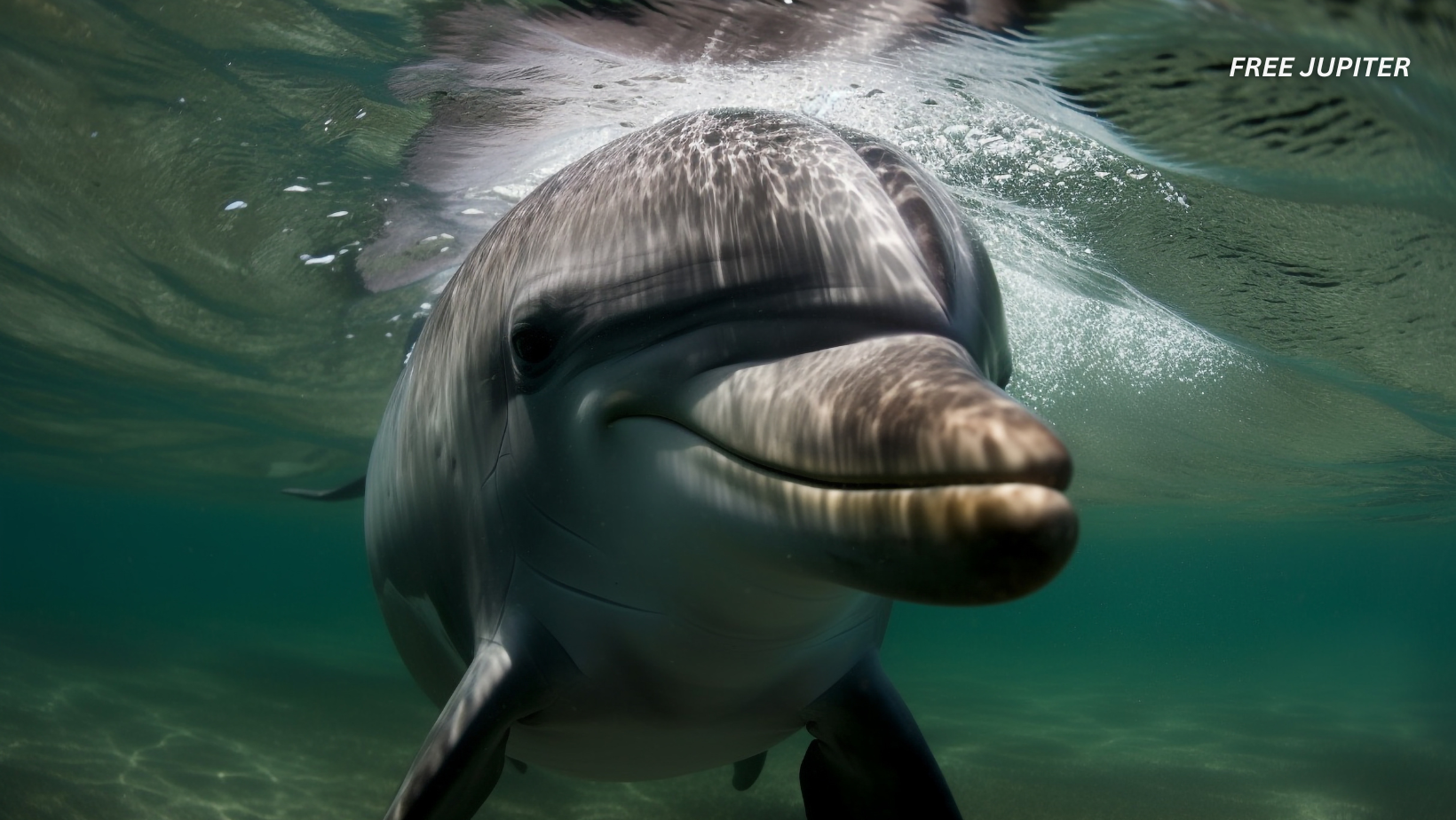Friendly Note: FreeJupiter.com shares general info for curious minds 🌟 Please fact-check all claims—and always check health matters with a professional 💙
For decades, scientists, researchers, and ocean lovers have imagined what it would be like to talk to dolphins. These social marine mammals are known for their complex intelligence, playful personalities, and advanced communication systems. Until now, meaningful interaction remained a fantasy.
Thanks to Google’s latest artificial intelligence tools, that dream is one step closer to reality. This new breakthrough allows humans to interpret and respond to dolphin vocalizations in real time using AI-powered technology.
The concept sounds like science fiction, but the science behind it is very real and already in motion.
Google’s AI Takes On Dolphin Communication
Google’s DeepMind division contributed to this project by developing AI models specifically trained to interpret dolphin sounds. These models use machine learning to detect subtle patterns in the animals’ vocalizations.
Scientists fed the system thousands of audio clips from dolphins observed in both captivity and the wild. The AI then identified recurring structures in the sounds, linking them to behaviors such as feeding, playing, or traveling.
When a dolphin vocalizes, the system instantly translates the sound into an action or meaning. From there, a response is generated in dolphin-like tones, making the interaction feel authentic and smooth.
Read More: Scientists Discover Animals Have a Mysterious ‘Sixth Sense’, Changing Evolutionary Theories
How This Works Below the Surface
The setup involves underwater microphones known as hydrophones that record dolphin chatter continuously. These recordings are sent to a real-time analyzer powered by Google’s AI.
The system compares the sounds against a massive database of known dolphin noises, interpreting each sound based on context and behavioral patterns. A response is then played through underwater speakers using tones that mimic dolphin language.
This closed-loop interaction allows for two-way “conversations” where dolphins receive feedback they recognize as meaningful. This method is not just theory anymore, it is already being tested in research settings with active dolphin responses.
Dolphins Are the Ideal Marine Communicators
Dolphins are uniquely suited to this experiment due to their high intelligence and communication complexity. They use a combination of clicks, whistles, and body language to convey information. Each dolphin has a unique signature whistle, much like a name.
Their brains are among the largest in the animal kingdom when adjusted for body size, which supports their advanced problem-solving abilities and emotional awareness. Dolphins also display cultural behaviors, including tool use and cooperative hunting, passed down from generation to generation.
Their intelligence and social nature make them perfect partners in this new form of communication.

The Bigger Picture for Animal Communication
What works for dolphins might one day work for other species. This technology could be adapted to understand whales, elephants, or even primates. Animals once thought impossible to engage with could soon become participants in meaningful exchanges with humans.
Researchers believe that animal welfare, environmental monitoring, and scientific understanding could improve if animals have a way to express needs, discomfort, or alerts. This breakthrough could also lead to new ways of preserving endangered species by understanding what they need to survive.
Early Testing Is Already Producing Results
Initial trials of the system have been successful in both marine centers and open ocean environments. In structured environments, dolphins have demonstrated an ability to respond appropriately to synthetic dolphin sounds.
In the wild, early trials show similar promise. Dolphins have been observed initiating interactions, mimicking the AI’s signals, and adjusting their behavior based on responses. These signs point to a real-time, two-way communication system that holds potential beyond controlled settings.
Larger trials are already underway, with more advanced versions of the AI expected to debut in the coming year.

Ethical Considerations Are Not Being Ignored
With any new animal technology, ethical concerns naturally arise. Some critics worry that constant exposure to artificial signals could disrupt natural dolphin behavior. Others question whether dolphins can truly consent to this type of interaction.
Researchers are taking precautions by consulting animal ethics boards and marine biologists. The project prioritizes minimal interference, using only short, non-invasive interactions. The goal is not to control dolphins, but to understand them.
The team is committed to keeping conservation and education at the forefront of all testing and applications.
What This Could Mean for Conservation
One major benefit of this technology is the potential for dolphin-guided conservation. Dolphins could one day warn researchers about changes in ocean temperature, plastic pollution, or even fishing threats in their region.
Instead of tracking behavior from a distance, scientists might one day simply ask. Giving dolphins a voice in their own survival efforts could help protect marine ecosystems and make ocean conservation more efficient and humane.
Public interest is also expected to grow as people feel more connected to wildlife, and they can directly engage with.
Read More: Volcanic Eruptions Can Make Ice In the Sky—Scientists Have Finally Figured Out Why
The Role of Google AI in Marine Research
This project marks a major milestone in the application of AI outside traditional tech industries. Google’s language modeling technology was originally designed to translate between human languages, but its flexibility allows it to adapt to non-human communication systems.
By using similar natural language processing tools and retraining them with dolphin data, Google has helped develop an AI that interprets meaning, not just sound. This approach demonstrates the potential of AI to bridge gaps in understanding not just between cultures, but between species.
Dolphins Could Soon Help Teach Humans
In a surprising twist, the tech might reverse the traditional research model. Instead of humans studying dolphins, dolphins could soon help teach humans about life in the ocean. Dolphins may be able to indicate the presence of certain species, locate fishing zones, or even point out hazards in their environment.
Their natural knowledge of the sea is unmatched. If we can decode their messages, we may finally unlock insights about the ocean that satellites and sonar have missed. This could be particularly useful in climate science and marine biodiversity studies.
How and Where to Witness This Innovation
Google and its partners have not yet released the technology for public use, but previews are available through academic studies and nonprofit organizations. Project CETI, one of the key collaborators, is working to publish results and offer public engagement tools soon.
People interested in learning more can follow updates through the official Google AI blog or academic partners like the SETI Institute. Educational centers and marine biology departments may eventually offer demonstrations.
Future expansions could include interactive exhibits in aquariums or virtual experiences for the classroom.
Talking to Dolphins
This technology represents one of the most exciting advances in human-animal interaction. Real-time communication with dolphins is no longer just a theory; it is happening.
By combining artificial intelligence with marine biology, researchers are breaking down one of the most profound barriers in science, the language divide between species. This innovation has the potential to change how we view not just dolphins, but the intelligence of all animals.
In the future, talking to dolphins may become as normal as using a translation app abroad. And that conversation is only just beginning.










